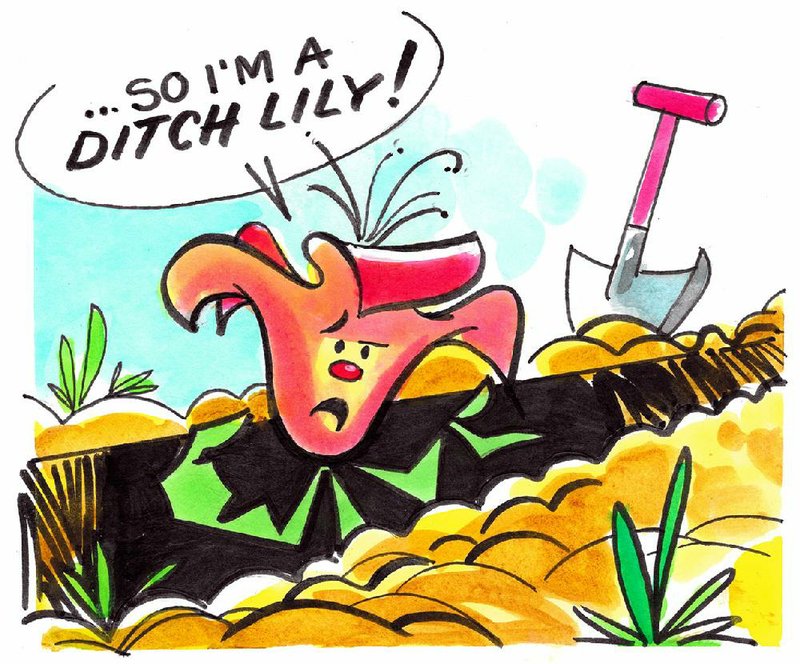Q I have a patch of the old orange day lilies. I have heard them called ditch lilies. I also have a strip of ground down my driveway that stays wet to damp due to my neighbor's watering there almost every day. My drive is about 2 feet below their yard. Would these day lilies be good plant in this strip? The strip is about 25 feet long, and these day lilies spread at a very rapid rate. I have had good luck transplanting them. If they are not a good option, do you have a suggestion?
A Hemerocallis fulva is the variety you are talking about, and if you have one spot where you can contain them, they will definitely multiply and hold the soil. The problem can be that they grow almost too well. They will usually take over and, if you have other plants nearby, the lilies can interfere with other growth. As long as you know the risks and limitations, they will serve your purpose. You could use other varieties, which would be a mix of colors but might not be as vigorous.
Q I was wondering if you can identify a plant that is at my mom's house. It has been there for over 25 years. Comes back each year. Doesn't get any bigger, mainly because it's surrounded by several large rocks, the driveway and the house. It's about 10 to 12 inches across. Also, I was wondering if there is a way to get a cutting or something.
A The plant in question is a sedum, a succulent plant that comes in many different varieties. I would guess that this one is an "Autumn Joy" variety, which blooms in the fall. You can divide the mother plant or it roots readily from cuttings. From the picture you provided I can tell it is planted in a hot, dry, poor site -- conditions it thrives under. It does not like too much water.
Q My mayhaw (Riverflat hawthorn, Crataegus) crop was a 100 percent failure last year due to cedar gall rust. I have removed all nearby cedar trees possible. What else can I do?
A Cedar rust is the disease that needs two hosts to complete its life cycle -- members of the eastern red cedar (juniper) family and the apple, quince or hawthorn family. These rusts can infect most varieties of eastern red cedar (Juniperus virginiana) as well as many other junipers and an alternate host. Of these alternate hosts, cedar-apple rust is primarily a disease of apples and crabapples but it sometimes infects pears, quince and serviceberry, and in some years it can infect other plants in the rose family. Removing cedar trees in your yard usually won't be enough, since the disease can cover a large radius. In a wet, rainy, early spring the disease tends to worsen, and heavy rains within the first two weeks of bud break and leaf growth can cause the disease to be severe. The only foolproof method to protect your plants is applying a fungicide as they begin to leaf out in the spring as a preventive application while the spores are on the junipers.
Q I live in a rural part of Conway, have been on the same farm for 30 years. We recently saw what appears to be nandina growing in a part of the woods ... we see daily and this is the first time we have seen these plants. I suspect they may have been sown by bird droppings. About a month ago we dug up about a dozen and replanted them in the yard. In the last week, several of them have dropped their leaves and either have lost their red berries or the berries have turned dark. Do you think they are dead or could possibly make a comeback? We love the look of this old shrub.
A Their reseeding and sprouting in natural areas is one of the reasons some gardeners don't like nandina. I do admit that I like them and have a few in my yard. Some are the fruiting types and some are not. I think your plants are simply in shock. Make sure you aren't keeping them too wet, as wet feet is the only thing they don't like. Be patient; my guess is they will bounce back. The best time to transplant these shrubs is their dormant season between November and February.
Janet B. Carson is a horticulture specialist for the University of Arkansas Cooperative Extension Service. Write to her at 2301 S. University Ave., Little Rock, Ark. 72204 or email her at
HomeStyle on 04/22/2017

